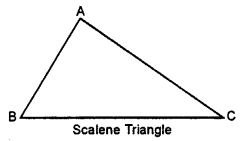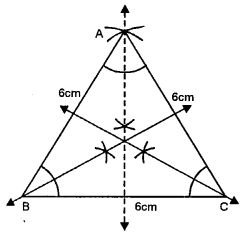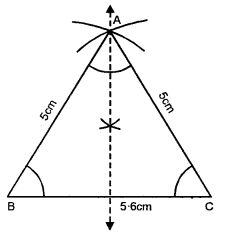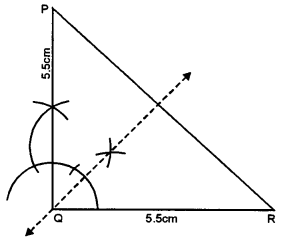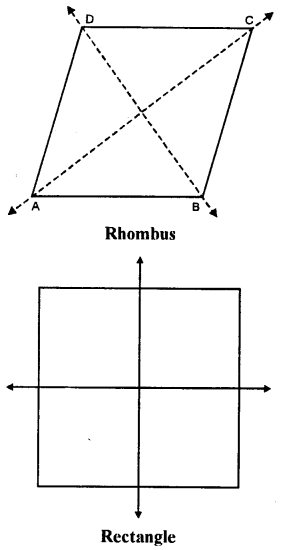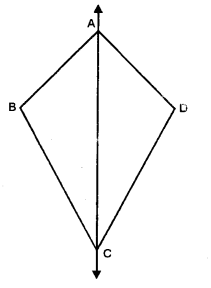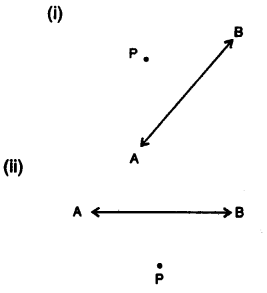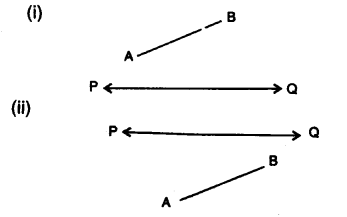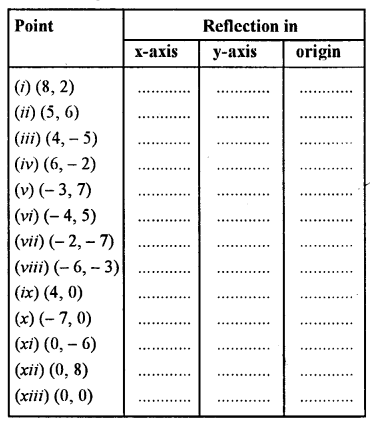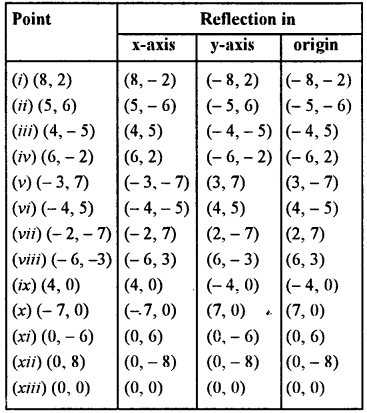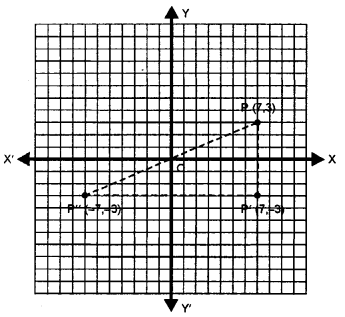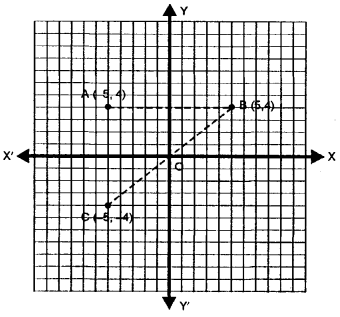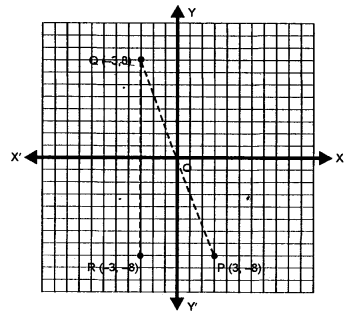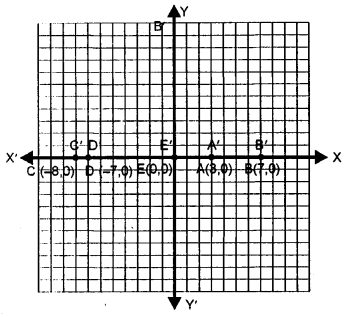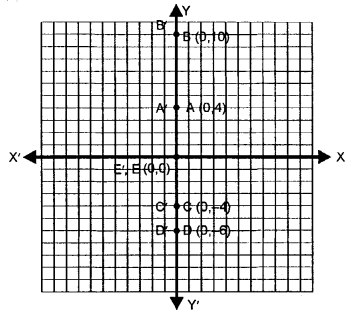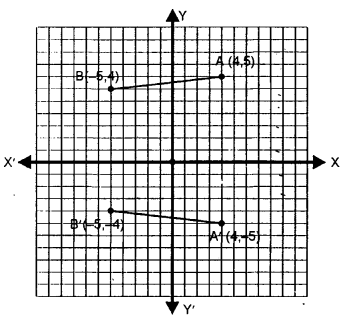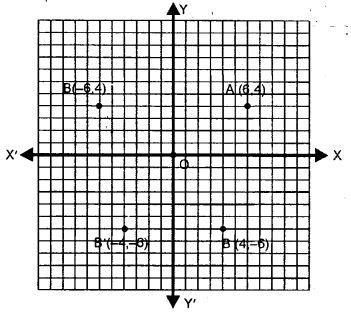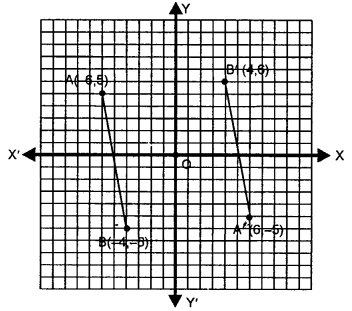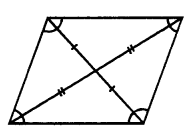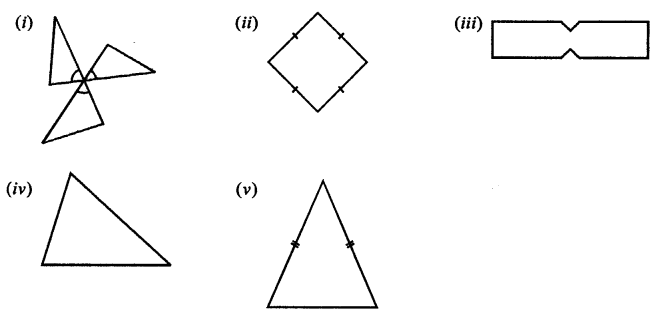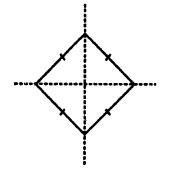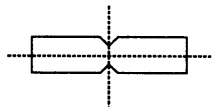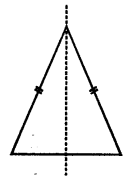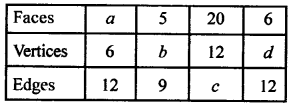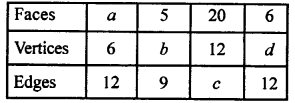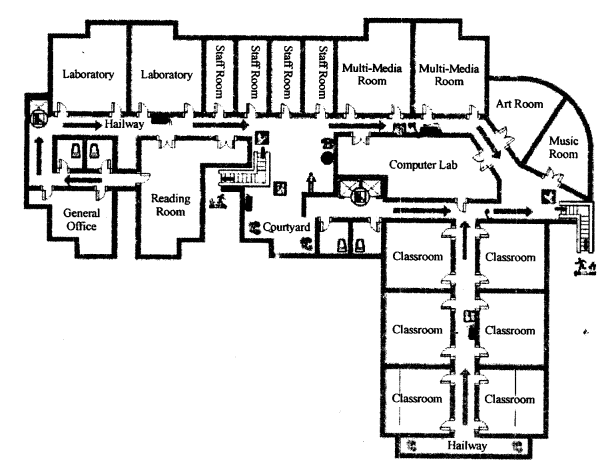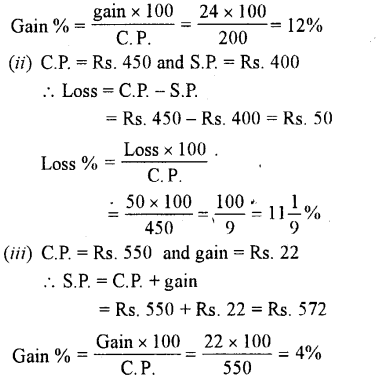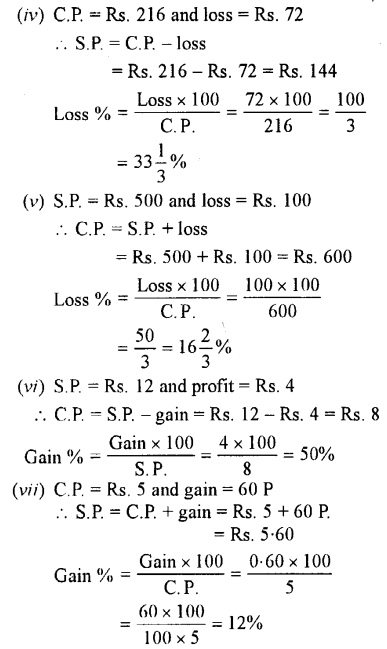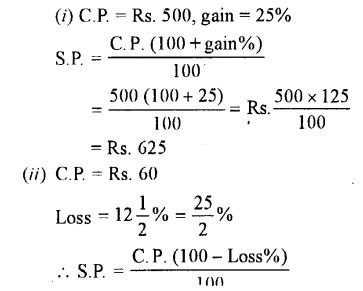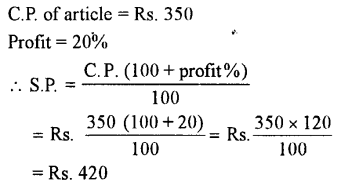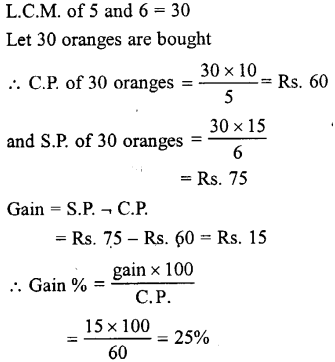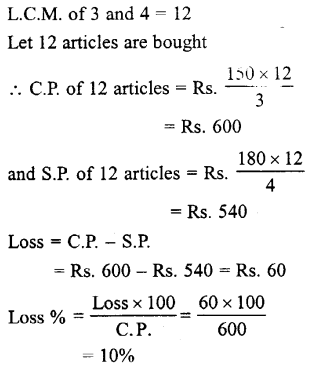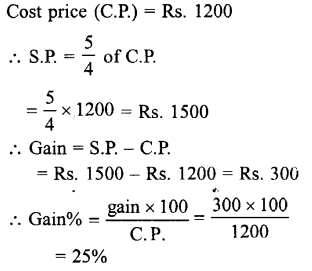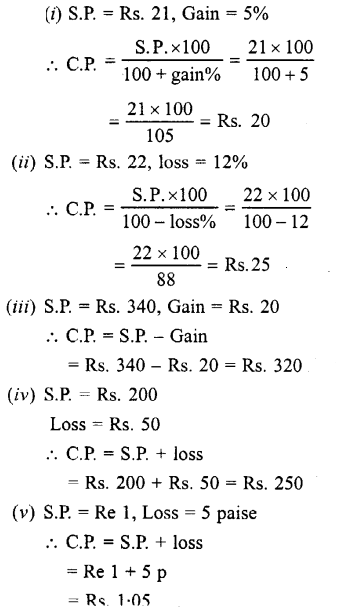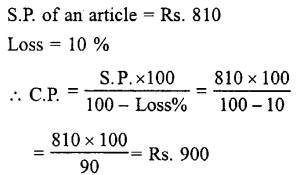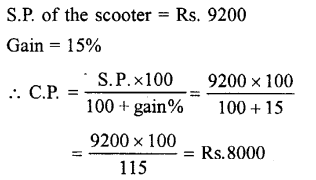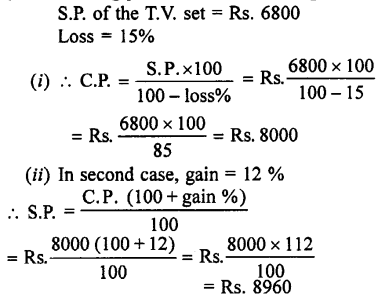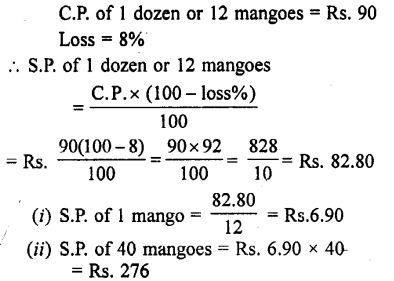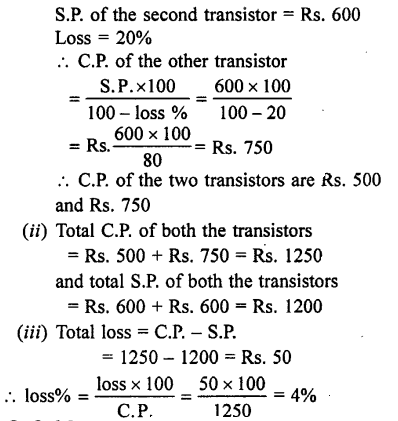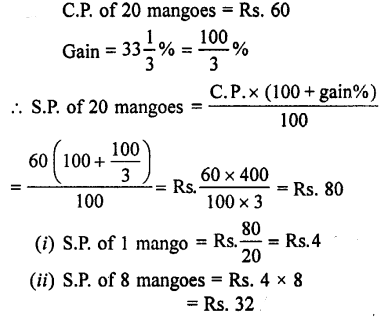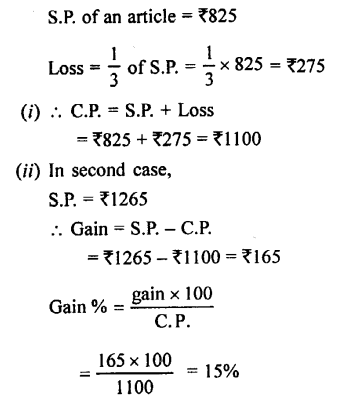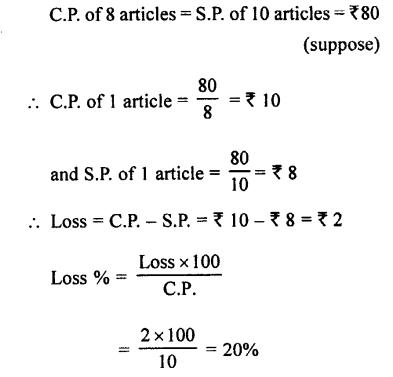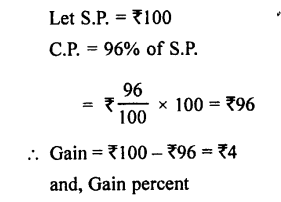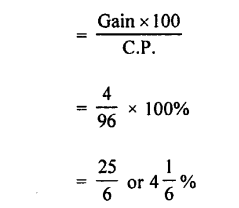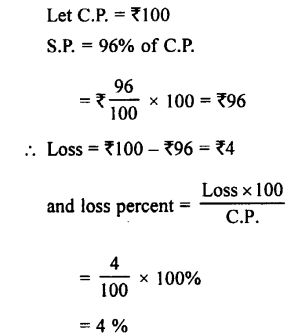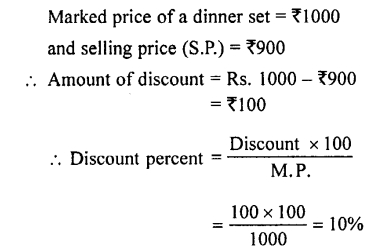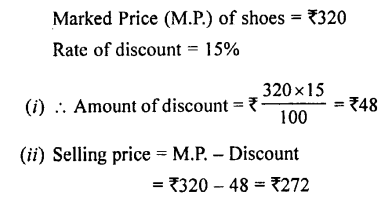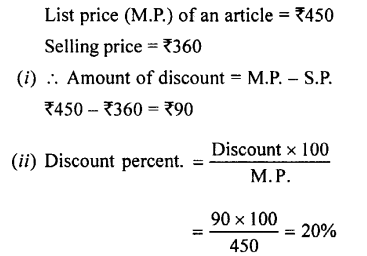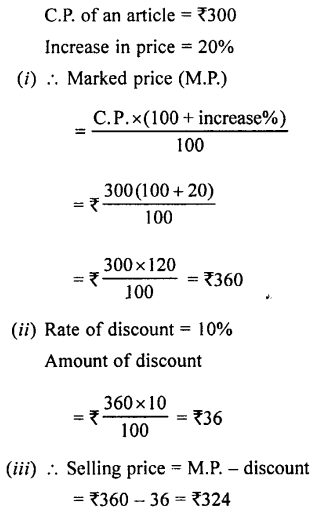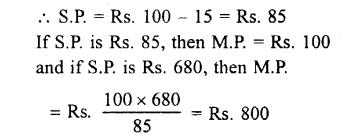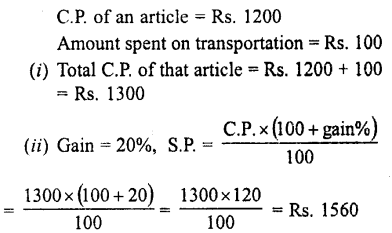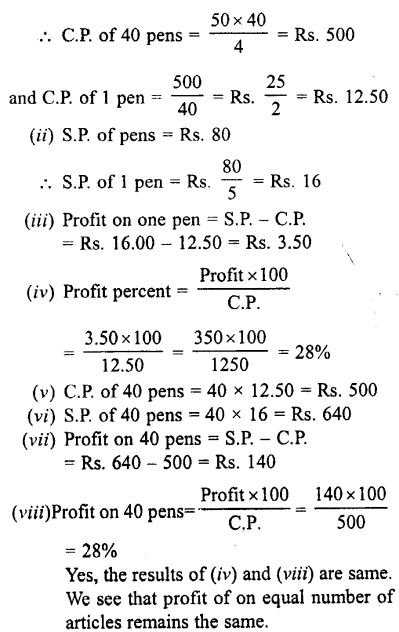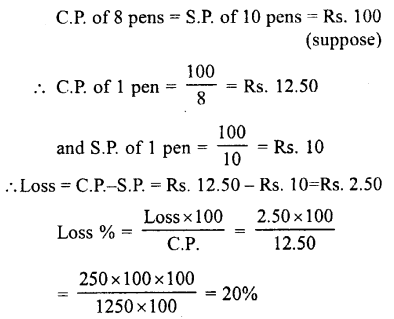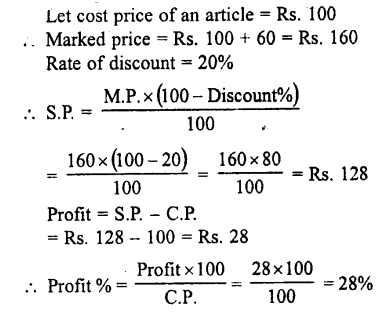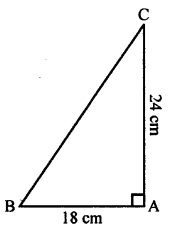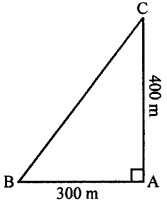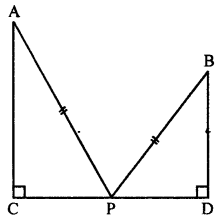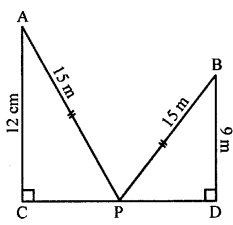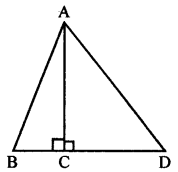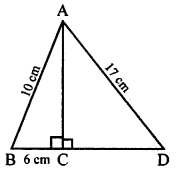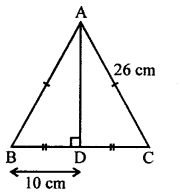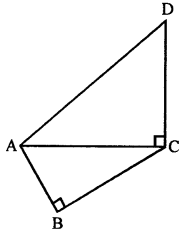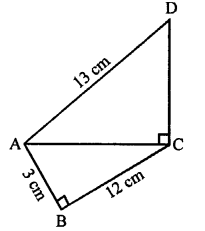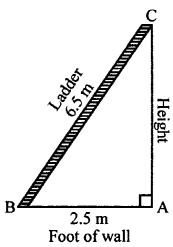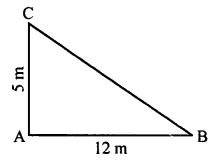Selina Concise Mathematics Class 7 ICSE Solutions Chapter 13 Set Concepts (Some Simple Divisions by Vedic Method)
Selina Publishers Concise Maths Class 7 ICSE Solutions Chapter 13 Set Concepts (Some Simple Divisions by Vedic Method)
ICSE SolutionsSelina ICSE SolutionsML Aggarwal Solutions
APlusTopper.com provides step by step solutions for Selina Concise ICSE Solutions for Class 7 Mathematics. You can download the Selina Concise Mathematics ICSE Solutions for Class 7 with Free PDF download option. Selina Publishers Concise Mathematics for Class 7 ICSE Solutions all questions are solved and explained by expert mathematic teachers as per ICSE board guidelines.
Selina Class 7 Maths ICSE SolutionsPhysicsChemistryBiologyGeographyHistory & Civics
POINTS TO REMEMBER
1. Definition of a Set : In our day to day life, different collective nouns are used to describe collection of objects ; such as : a group of students playing cricket, a pack of cards, a bunch of flowers, etc
In mathematics, such collections of objects are named as sets.
A set is a collection of well-defined objects, things or symbols, etc.
The phrase ‘well-defined’ means ; it must be possible to know, without any doubt, whether a given object (thing or symbol) belongs to the set under consideration or not.
For example :
“The set of tall boys of Class 10” is not well-defined ; since it is not possible to know that which boys are to be included and exactly what is the limit.
But when we say, “The set of boys of Class 10, which are taller than Peter”, now we can compare the heights of different boys with the height of Peter and can know exactly, that which boys are to be included in the required set. Thus, the objects are well-defined.
2. Elements of a set: The objects (things, symbols, etc.) used to form a set are called elements or members of the set.
In general, a set is denoted by a capital letter of English alphabet with its elements written inside curly braces and separated by commas.
e.g., Set A = {5, 10, 12, 15}
3. Use of Symbol ‘∈’ or Symbol ‘∉ ‘ : The symbol ‘∈’ stands for ‘belongs to’ or ‘ is an element of’ or ‘is a member of’; whereas the symbol ‘∉’ stands for ‘does not belong to’ or ‘is not an element of or ‘is not a member of’.
e.g., For set P = {3, 6, 8, 13, 18} ; 3 ∈ P, 5∉ P and so on.
(i) The elements in a set can be written in any order.
Thus, {a, b, c, d] is the same set as {b, d, a, c} or {c, b, d, a}, etc.
(ii) The elements in a set should not be repeated, i.e. if any element occurs many times, it should be written only once.
Thus, set of letters of the word ‘crook’ = {c, r, o, k}.
There are two os in the given word “crook” ; but in the set, it is written only once.
4. Representation of A Set: A set, in general, is represented in :
(i) Description method (form)
(ii) Tabular or Roster method (form)
(iii) Set-builder or Rule method
For example :
N is the set of natural numbers [Description method]
N = {1, 2, 3, 4, 5, ……. } [Roster or Tabular method]
N = {x : x is a natural number}, or {x : x ∈ N} [Set-builder or Rule method]
[The symbol ‘ : ’ stands for such that and the set {x : x ∈ N} is read as, “the set of x such that x is a natural number”].
It is clear from the example given above that:
(i) in description method a well-defined description about the set is given.
(ii) in roster or tabular method the elements of the set are written inside a pair of curly braces and are separated by commas.
(iii) in set-builder or ruler method the actual elements of the set are not written, but a rule or a statement or a formula is written in the briefest possible way.
5. Cardinal Number : The cardinal number of a set is the number of elements in it.
Thus, if a set A has 5 elements ; its cardinal number is 5 and we represent it by writing n (A) = 5 .
Similarly, if set B = Set of even natural numbers less than 10 then, B = {2, 4, 6, 8} and n (B) = 4.
If B = {0}, then n (B) = 1. Since, 0 is an element of set B.
6. Types of Sets :
(i) Finite Set: A set is said to be a finite set, if it has a limited (countable) number of elements in it.
For example :
(a) S = Set of natural numbers between 10 and 15 = {11, 12, 13, 14}
(b) P = {0, 1,2, , 20} = {x : x ∈ W and x ≤ 20} and so on.
(ii) Infinite set: A set is said to be an infinite set, if it has an unlimited (uncountable) number of elements in it.
For example :
(a) P = Set of prime numbers = {2, 3, 5,…. }
(b) B = (x : x ∈ N and x ≥ 21} = (21, 22, 23, } ans so on.
(iii) Empty set or Null set: The set, with no element in it, is called the empty set or the null set.
The empty set is represented by a pair of braces with no element in it or by the Danish letter Φ, which is pronounced as ‘oe’
Thus, the empty set = { } = Φ
Note : For empty set, it is wrong to call ‘an empty set’ or ‘a null set’ as there is one and only one empty set though it may have many descriptions.
Therefore, it is always called “the empty set or the null set”.
Some examples of the empty set :
(a) Let A = {a man of age more than 400 years}.
Since there can not be any man with the age more than 400 years; the set A will have no element in it i.e. It is the empty set. And we write : A = { } or Φ
(b) If B = (Triangles with 4 sides} ; it is clear that B = Φ
Note :
1. Φ ≠{0}, since {0} is a set with 0 as its element whereas Φ has no element.
2. {Φ} ≠ {0}, since both the sets have different elements.
3. The cardinal number of the empty set is 0 i.e. n (Φ) = 0.
(iv) Disjoint sets : Sets having no element in common are called disjoint sets.
For example :
Sets P = (5, 7, 9} and O = (4, 6, 10, 12} are disjoint; as they do not have any element in common.
(v) Joint (overlapping) sets : Sets having atleast one element in common are called joint or overlapping sets.
For example:
Set B = (4,6, 8,10,12} and set C = (3,6,9,12,15} are joint sets; as they have elements 6 and 12 common.
(vi) Equal sets : Two sets are said to be equal, if the elements of both the sets are the same.
For example :
If set A = {x, y, z} and set B = {last three letters of English alphabet}.
Clearly, sets A and B have the same elements and so set A = set B.
(vii) Equivalent sets : Two sets are said to be equivalent, if they have equal number of elements in them, i.e. the cardinal numbers of both the sets are equal.
For example :
Let A = (3, 6, 9} and B = {a, b, c}.
Since, set A has 3 elements and set B also has 3 elements i.e., n (A) = n (B); therefore, sets A and B are equivalent and for this, we write : A ↔ B.
Note:
1. Equal sets are always equivalent; but the converse is not always true (i.e. it is not necessary that equivalent sets are equal also).
2. In equivalent sets, the number of elements (cardinal number) are equal, whereas in equal sets the element are the same.
3. Two infinite sets are always equivalent;
Set Concepts Exercise 13A – Selina Concise Mathematics Class 7 ICSE Solutions
Question 1.
Find, whether or not, each of the following collections represent a set:
(i) The collection of good students in your school.
(ii) The collection of the numbers between 30 and 45.
(iii) The collection of fat-people in your colony.
(iv) The collection of interesting books in your school library.
(v) The collection of books in the library and are of your interest.
Solution:
(i) It is not a set as it is not well defined.
(ii) It is a set
(iii) It is not a set as it is not well defined.
(iv) It is not a set as it is not well defined.
(v) It is a set.
Question 2.
State whether true or false :
(i) Set {4, 5, 8} is same as the set {5, 4, 8} and the set {8, 4, 5}
(ii) Sets {a, b, m, n} and {a, a, m, b, n, n) are same.
(iii) Set of letters in the word ‘suchismita’ is {s, u, c, h, i, m, t, a}
(iv) Set of letters in the word ‘MAHMOOD’ is {M, A, H, O, D}.
Solution:
(i) True
(ii) True
(iii) True as it has the same elements
(iv) True as it has the same elements.
Question 3.
Let set A = {6, 8, 10, 12} and set B = {3, 9, 15, 18}.
Insert the symbol ‘ ∈ ’ or ‘ ∉ ’ to make each of the following true :
(i) 6 …. A
(ii) 10 …. B
(iii) 18 …. B
(iv) (6 + 3) …. B
(v) (15 – 9) …. B
(vi) 12 …. A
(vii) (6 + 8) …. A
(viii) 6 and 8 …. A
Solution:
(i) 6 ∈ A
(ii) 10 ∉ B
(iii) 18 ∈B
(iv) (6 + 3) or 9 ∈ B
(v) 15 – 9 or 6 g B
(vi) 12 ∈ A
(vii) 6 + 8 or 14 ∉ A
(viii) 6 and 8 ∈ A
Question 4.
Express each of the following sets in
roster form :
(i) Set of odd whole numbers between 15 and 27.
(ii) A = Set of letters in the word “CHITAMBARAM”
(iii) B = {All even numbers from 15 to 26}
(iv) P = {x : x is a vowel used in the word ‘ARITHMETIC’}
(v) S = {Squares of first eight whole numbers}
(vi) Set of all integers between 7 and 94; which are divisible by 6.
(vii) C = {All composite numbers between 2 and 20}
(viii) D = Set of Prime numbers from 2 to 23.
(ix) E = Set of natural numbers below 30 which are divisible by 2 or 5.
(x) F = Set of factors of 24.
(xi) G = Set of names of three closed figures in Geometry.
(xii) H = {x : x eW and x < 10}
(xiii) J = {x: x e N and 2x – 3 ≤17}
(xiv) K = {x : x is an integer and – 3 < x < 5}
Solution:
(i) {17, 19, 21, 23, 25}
(ii) A = (C, H, I, T, A, M, B, R}
(iii) B = {16, 18, 20, 22, 24, 26}
(iv) P = {a, e, i}
(v) S = {0, 1, 4, 9, 16, 25, 36, 49}
(vi) {12, 18, 24; 30, 36, 42, 48, 54, 60, 66, 72, 78, 84, 90}
(vii) C = {4, 6, 8, 9, 10, 12, 14, 15, 16, 18}
(viii) D = {2, 3, 5, 7, 11, 13, 17, 19,23}
(ix) E = {2, 4, 5, 6, 8, 10, 12, 14, 15, 16, 18, 20, 22, 24, 25, 26, 28}
(x) F={l,2, 3, 4, 6, 8, 12, 24}
(xi) G = {Triangle, quadrilateral, circle}
(xii) H = {0, 1, 2, 3, 4, 5, 6, 7, 8, 9}
(xiii) 2x – 3 ≤ 17
⇒ 2x ≤ 17 + 3 2 x ≤ 20
⇒ x ≤ \(\frac { 20 }{ 2 }\)
x ≤ 10
∴ J = {1, 2, 3, 4, 5, 6, 7, 8, 9, 10}
(xiv) ∵ – 3 < x < 5
∴x lies between – 3 and 5
∴K = {- 2, – 1, 0, 1, 2, 3, 4}
Question 5.
Express each of the following sets in set- builder notation (form) :
(i) {3, 6, 9, 12, 15}
(ii) {2, 3, 5, 7, 11, 13 …. }
(iii) {1, 4, 9, 16, 25, 36}
(iv) {0, 2, 4, 6, 8, 10, 12, …. }
(v) {Monday, Tuesday, Wednesday}
(vi) {23, 25, 27, 29, … }
(vii) {\(\frac { 1 }{ 3 }\),\(\frac { 1 }{ 4 }\),\(\frac { 1 }{ 5 }\),\(\frac { 1 }{ 6 }\),\(\frac { 1 }{ 7 }\),\(\frac { 1 }{ 8 }\)}
(viii) {42, 49, 56, 63, 70, 77}
Solution:
(i) {3, 6, 9, 12, 15}
= {x: x is a natural number divisible by 3 ;x< 18}
(ii) {2, 3, 5, 7, 11, 13, }
= {x : x is a prime number}
(iii) {1,4,9, 16,25,36}
= {x : x is a perfect square ; x < 36}
(iv) {0, 2, 4, 6, 8, 10, 12, }
= {x : x is a whole number divisible by 2}
(v) {Monday, Tuesday, Wednesday}
= {x : x is one of the first three days of 3 week}
(vi) {23, 25, 27, 29, }
= {x : x is an odd natural number; x ≥ 23}
(vii) {\(\frac { 1 }{ 3 }\),\(\frac { 1 }{ 4 }\),\(\frac { 1 }{ 5 }\),\(\frac { 1 }{ 6 }\),\(\frac { 1 }{ 7 }\),\(\frac { 1 }{ 8 }\)}
= {x: x = \(\frac { 1 }{ n }\) when n is a natural number: 3 ≤ n ≤ 8}
(viii) {42, 49, 56, 63, 70, 77}
= (x: x is a natural number divisible by 7 ; 42 ≤x ≤ 77}
Question 6.
Given : A = {x : x is a multiple of 2 and is less than 25}
B = {x : x is a square of a natural number and is less than 25}
C = {x : x is a multiple of 3 and is less than 25}
D = {x: x is a prime number less than 25}
Write the sets A, B, C and D in roster form.
Solution:
A = {x: x is a multiple of 2 and is less than 25}
= {2, 4, 6, 8, 10, 12, 14, 16, 18, 20, 22, 24}
B = {x : x is a square of natural number and is less than 25}
= {1,4,9,16}
C = {x : x is a multiple of 3 and is less than 25}
= {3, 6, 9, 12, 15, 18,21,24}
D = {x : x is a prime number less than 25}
= {2, 3, 5, 7, 11, 13, 17, 19, 23}
Set Concepts Exercise 13B – Selina Concise Mathematics Class 7 ICSE Solutions
Question 1.
Write the cardinal number of each of the following sets:
(i) A = Set of days in a leap year.
(ii) B = Set of numbers on a clopk-face.
(iii) C = {x : x ∈ N and x ≤ 7}
(iv) D = Set of letters in the word “PANIPAT”.
(v) E = Set of prime numbers between 5 and 15.
(vi) F = {x : x ∈ Z and – 2 < x ≤ 5}
(vii) G = {x : x is a perfect square number, x ∈N and x ≤ 30}.
Solution:
(i) n A = 366
(ii) n B = 12
(iii) n C =7
(iv) n D = 5
(v) n E = 3
(vi) n F =7
(vii) n G = 5
Question 2.
For each set, given below, state whether it is finite set, infinite set or the null set :
(i) {natural numbers more than 100}
(ii) A = {x : x is an integer between 1 and 2}
(iii) B = {x : x ∈ W ; x is less than 100}.
(iv) Set of mountains in the world.
(v) {multiples of 8}.
(vi) {even numbers not divisible by 2}.
(vii) {squares of natural numbers}.
(viii) {coins used in India}
(ix) C = {x | x is a prime number between 7 and 10}.
(x) Planets of the Solar system.
Solution:
(i) {Natural numbers more than 100}
= It is an infinite set
(ii) A = {x : x is an integer between 1 and 2}
It is a null set
(iii) B = {x : x ∈ W, x is less than 100}
It is finite set as it has 100 elements i.e. from 0 to 99.
(iv) Set of mountains in the world.
∴ It is an infinite set
(v) {Multiples of 8}
It is an infinite set
(vi) {Even numbers not divisible by 2}
It is a null set
(vii) {Squares of natural numbers}
∴ It is an infinite set
(viii) {Coins used in India}
∴It is a finite set as these are countable
(ix) {x | x is a prime number between 7 and 10}
As there is not such prime number between 7 and 10.
Hence it is null set
(x) Planets of two Solar system.
It is finite set as there are countable.
Question 3.
State, which of the following pairs of sets are disjoint :
(i) {0, 1, 2, 6, 8} and {odd numbers less than 10.
(ii) {birds} and {tress}
(iii) {x : x is a fan of cricket} and {x : x is a fan of football}.
(iv) A = {natural numbers less than 10} and B = {x : x is a multiple of 5}.
(v) {people living in Calcutta} and {people living in West Bengal}.
Solution:
(i) {0, 1, 2, 6, 8} and {odd numbers less than 10}
⇒ {0, 1,2, 6, 8} and {1,3, 5, 7, 9}
∴There sets are not disjoint sets as there is one element (1) is common.
(ii) {Birds} and {trees}
These are disjoint sets as there is no common element in term
(iii) {x : x is a fan of cricket} and {x : x is a fan of football}
These are not disjoint sets as there can be a person who is fan of both the games.
(iv) A = {Natural numbers less than 10} and B = {x : x is a multiple of 5}
⇒ A = {1, 2, 3, 4, 5, 6, 7, 8, 9} and B = {5, 10, 15 }
These are hot disjoint sets as there is one element 5, which is common.
(v) {People living in Calcutta} and {People living in West Bengal}.
These are not disjoint sets as people of Calcutta are the people of West Bengal as Calcutta is a city of West Bengal.
So, only (ii) is a pair of disjoint sets.
Question 4.
State whether the given pairs of sets are equal or equivalent.
(i) A = {first four natural numbers} and B = {first four whole numbers}.
(ii) A = Set of letters of the word “FOLLOW” and B = Set of letters of the word “WOLF”.
(iii) E = {even natural numbers less than 10} and O = {odd natural numbers less than 9}
(iv) A = {days of the week starting with letter S} and B = {days of the week starting with letter T}.
(v) M = {multiples of 2 and 3 between 10 and 20} and N = {multiples of 2 and 5 between 10 and 20}.
(vi) P = {prime numbers which divide 70 exactly} and Q = {prime numbers which divide 105 exactly}
(vii) A = {0², 1², 2², 3², 4²} and = {16, 9,4, 1, 0}.
(viii) E = {8,JO, 12, 14, 16} and F = {even natural numbers between 6 and 18}.
(ix) A = {letters of the word SUPERSTITION} and B = {letters of the word JURISDICTION}.
Solution:
(i) A = {first four natural numbers}
= {1,2, 3, 4}
B = {first first whole number)
= {0, 1,2,3}
These are equivalent sets as both have equal number of elements but not same.
(ii) A = Set of letters of the word ‘FOLLOW’
= {F, O, L, W}
B = Set of letters of the word ‘WOLF’
= {W, O, L, F}
These are equal sets as these have same and equal elements.
(iii) E = {even natural numbers less than 10}
= {2, 4, 6, 8}
O = {odd natural numbers less than 9}
= {L3, 5, 7}
These are equivalent sets as both have equal number of elements but not the same.
(iv) A = {Days of the week starting with letter S}
= {Sunday, Saturday}
B = {Days of the week starting with letter T}
= {Tuesday, Thursday}
These are equivalent sets as both have equal number of elements.
(v) M = {Multiples of 2 and 3 between 10 and 20}
= {12, 14, 15, 16, 18}
N = {Multiples of 2 and 5 between 10 and 20}
= {12, 14, 15, 16, 18}
These are equal sets as these have same and equal number of elements.
(vi) P = {Prime numbers which divide 70 exactly}
= {2, 5, 7}
Q = {Prime numbers which divide 105 exactly}
= {3, 5, 7}
These are equivalent sets as these have equal number of elements.
(vii) A = {02, l2, 22, 32, 42} = {0, 1, 4, 9, 16} B = {16, 9, 4, 1,0}
These are equal sets as these have same and equal number of elements.
(viii) E = {8, 10, 12, 14, 16}
F = {even natural numbers between 6 and 18}
= {8, 10, 12, 14, 16}
These sets are equal as these have same and equal number of elements
(ix) A = {Letters of the word SUPERSTITION}
= {S, U, P, E, R, T, I, O, N}
B = Letters of the word JURISDICTION.
= (J, U, R, I, S, D, C, T, O, N}
These are neither equal nor equivalent sets as these have different and unequal elements.
Question 5.
Examine which of the following sets are the empty sets :
(i) The set of triangles having three equal sides.
(ii) The set of lions in your class.
(iii) {x 😡 + 3 = 2 and xeN}
(iv) P = {x : 3x = 0}
Solution:
(i) The set of triangle having three equal sides. This is not an empty set
(ii) The set of lions in your class This is an empty set
(iii) {x : x +3 = 2 and x ∈N}
x ≠ 3 = 2 ⇒ x = 2-3= -l
which is not a natural number.
∴ It is an empty set.
(iv) P = {x : 3x = 0} = {0} which is not an empty set.
Hence (ii) and (iii) are empty sets.
Question 6.
State true or false :
(i) All examples of the empty set are equal.
(ii) All examples of the empty set are equivalent.
(iii) If two sets have the same cardinal number, they are equal sets.
(iv) If n (A) = n (B) then A and B are equivalent sets.
(v) If B = {x : x + 4 = 4}, then B is the empty set.
(vi) The set of all points in a line is a finite set.
(vii) The set of letters in your Mathematics book is an infinite set.
(viii) If M = {1, 2, 4, 6} and N = {x : x is a factor of 12} ; then M = N.
(ix) The set of whole numbers greater than 50 is an infinite set.
(x) If A and B are two different infinite sets, then n (A) = n (B).
Solution:
(i) True
(ii) True
(iii) False
(iv) True
(v) False
(vi) False
(vii) False
(viii) False
( ix )True
(x) False
Question 7.
Which of the following represent the null set ?
φ, {0}, 0, { }, {φ}
Solution:
φ and { } are the null sets other are not as there have same element.
Set Concepts Exercise 13C – Selina Concise Mathematics Class 7 ICSE Solutions
Question 1.
Fill in the blanks :
(i) If each element of set P is also an element of set Q, then P is said to be …… of Q and Q is said to be of P.
(ii) Every set is a ….. of itself.
(iii) The empty set is a …… of every set.
(iv) If A is proper subset of B, then n (A) …. n (B).
Solution:
(i) If each element of set P is also an element of set Q then P is said to be subject of Q ; and Q is said to be super set of P.
(ii) Every set is a subset of itself.
(iii) The empty set is subset of every set.
(iv) If A is proper subset of B, then n (A) is less than n (B)
Question 2.
If A = {5, 7, 8, 9} ; then which of the following are subsets of A ?
(i) B = {5, 8}
(ii) C = {0}
(iii) D = {7, 9, 10}
(iv) E = { }
(V) F = {8, 7, 9, 5}
Solution:
(i) B = {5, 8,}
∴B ⊂ A
(ii) C = {0}
∴ C φ A
(iii) D = {7, 9, 10}
∴D ⊄ A
(iv) E = { }
∴E ⊂A (An empty set is subset of every set)
(v) F = (8, 7, 9, 5}
∴F ⊂A
∵ Every set is subset of it self.
Hence (i), (iv)
and (v) are subsets of A.
Question 3.
If P = {2, 3, 4, 5} ; then which of the following are proper subsets of P ?
(i) A = {3, 4}
(ii) B = { }
(iii) C = {23, 45}
(iv) D = {6, 5, 4}
(v) E = {0}
Solution:
P = {2, 3, 4, 5}
(i) A = {3,4},
(ii) B = { }, C = {23, 45},
D = {6, 5, 4} and E = {0}.
We see that only A and B are the proper subset of P.
Question 4.
If A = {even numbers less than 12},
B = {2, 4},
C = {1, 2, 3},
D = {2, 6} and E = {4}
State which of the following statements are true :
(i) B⊂A
(ii) C⊆A
(iii) D⊂C
(iv) D ⊄ A
(v)E⊇B
(vi) A⊇B⊇E
Solution:
A = {Even number less than 12} = {2, 4, 6, 8, 10}
B = {2, 4}, C = {1, 2, 3},
D = {2, 6} and E = {4}
(i) B ⊂ A: It is true
(ii) C ⊆ A: It is false
(iii) D ⊂ C : It is false
(iv) D ⊄ A
(v) E ⊇ B : It is false
(vi) A ⊇ B ⊇ E : It is true
Question 5.
Given A = {a, c}, B = {p, q, r} and C = Set of digits used to form number 1351.
Write all the subsets of sets A, B and C.
Solution:
(i) A = {a, c}
∴ Subsets are : { } or φ, {a}, {c} and {a, c}
(ii) B = {p,q, r)
∴ subsets are : { } or φ, {p}, {q}, {r}, {p, q}, ip, r}, {q, r} and {p, q, r}
(iii) C = Set of digits used in 135, = {1,3,5}
∴ Subsets are = { }
or φ, {1}, {3}, {5}, {1,3}, {1,5}, {2,5} and {1, 3, 5}
Question 6.
(i) If A = {p, q, r}, then number of subsets of A = ……
(ii) If B = {5, 4, 6, 8}, then number of proper subsets of B = ……
(iii) If C = {0}, then number of subsets of C = …..
(iv) If M = {x : x ∈ N and x < 3}, then M has …… proper subsets.
Solution:
(i) If A = {p, q, r},
then number of subsets of A = 2³ = 2×2×2 = 8
(ii) If B = {5, 4, 6, 8},
then number of proper subsets of B = 24 – 1 = 2 × 2 × 2× 2 – 1 = 16 – 1 = 15
(iii) If C = {0},
then number of subsets of C = 21 = 2
(iv) If M = {x: x ∈ N and x < 3}, = {1, 2}
Then M has proper subsets = 22—1 = 4 — 1 = 3
Question 7.
For the universal set {4, 5, 6, 7, 8, 9, 10, 11,12,13} ; find its subsets A, B, C and D such that
(i) A = {even numbers}
(ii) B = {odd numbers greater than 8}
(iii) C = {prime numbers}
(iv) D = {even numbers less than 10}.
Also, find compliments of each set i.e., find A’, B’, C’ and D’.
Solution:
(i) A = {even numbers}
= {4, 6, 8, 10, 12}
(ii) B = {odd numbers greater then 8}
= {9, 11, 13}
(iii) C = {Prime numbers}
= {5, 7, 11, 13}
(iv) D = {even numbers less than 10}
= {4, 6, 8}
A’= {5, 7, 9, 11, 13},
B’ = {4, 5, 6, 7, 8, 10, 12}
C’ = { 4, 6, 8, 9, 10, 12}
and D’ = {5, 7, 9, 10, 11, 12, 13}
Set Concepts Exercise 13D – Selina Concise Mathematics Class 7 ICSE Solutions
Question 1.
If A = {4, 5, 6, 7, 8} and B = {6, 8, 10, 12}, find :
(i) A∪B
(ii) A∩B
(iii) A-B
(iv) B-A
Solution:
(i) A∪B
= [All the elements from set A and all the elements from set B]
= {4, 5, 6, 7, 8, 10, 12}
(ii) A∩B
= [elements common to both the sets A and B]
= {6, 8}
(iii) A-B
= [elements of set A which are not in set B]
= {4, 5, 7}
(iv) B-A
= [elements of set B which are not in set A]
= {10, 12}
Question 2.
If A = {3, 5, 7, 9, 11} and B = {4, 7, 10}, find:
(i) n(A)
(ii) n(B)
(iii) A∪B and n(A∪B)
(iv) A∩B and n(A∩B)
Solution:
(i) n(A) = (3, 5, 7, 9, 11) = 5
(ii) n(B) = (4, 7, 10) = 3
(iii) A ∪ B = {3, 4, 5, 7, 9, 10, 11} n(A ∪ B) = 7
(iv) A∩B = {6} n(A∩B)=l
Question 3.
If A = {2, 4, 6, 8} and B = {3, 6, 9, 12}, find:
(i) (A ∩ B) and n(A ∩ B)
(ii) (A – B) and n(A – B)
(iii) n(B)
Solution:
(i) (A ∩ B) = {2, 4, 8} n( A ∩ B) = 3
(ii) (A – B) and n(A – B)
⇒ (A – B) = (2, 4, 8)
⇒ n(A-B) = 3
(iii) n(B) = {3, 6, 9, 12} = 4
Question 4.
If P = {x : x is a factor of 12} and Q = {x: x is a factor of 16}, find :
(i) n(P)
(ii) n(Q)
(iii) Q – P and n(Q – P)
Solution:
(i) n(P) = Factors of 12 are
= 1, 2, 3, 4, 6, 12
∴ n(P) = 6
(ii) n(Q) = Factors of 16 are = 1. 2, 4, 8, 16
∴n(Q) = 5
(iii) Q – P and n(Q – P)
Elements of set P = {1, 2, 3, 4, 6, 12}
Elements of set Q = {1, 2, 4, 8, 16}
∴ Q – P = 8, 16
n(Q-P) = 2
Question 5.
M = {x : x is a natural number between 0 and 8) and N = {x : x is a natural number from 5 to 10}. Find :
(i) M – N and n(M – N)
(ii) N – M and n(N – M)
Solution:
Natural numbers between 0 and 8 M = {0, 1, 2, 3, 4, 5, 6, 7} and Natural numbers between 5 to 10 N = {6, 7, 8, 9, 10}
(i) M – N = {1, 2, 3, 4} and n(M – N) = 4
(ii) N – M = {8, 9, 10} and n (N – M) = 3
Question 6.
If A = {x: x is natural number divisible by 2 and x< 16} and B = {x:x is a whole number divisible by 3 and x < 18}, find :
(i) n(A)
(ii) n(B)
(iii) A∩B and n(A∩B)
(iv) n(A – B)
Solution:
(i) A = {x : x is natural number divisible-by 2 and x < 16}
A = {2, 4, 6, 8, 10, 12, 14}
n(A) = 7
(ii) B = {x: x is a whole number divisible by 3 and x < 18}
B = {3, 6, 9, 12, 15, 18}
n(B) = 6
(iii) A n B = {2, 4, 6, 8, 10, 12, 14} n {3, 6, 9, 12, 15, 18}
A∩B = {6,12} n(A ∩ B) = 2
(iv) A – B = {2, 4, 6, 8, 10, 12, 14} – {3, 6, 9, 12, 15, 18}
A-B = {2,4, 8, 10, 14} n(A – B) = 5
Question 7.
Let A and B be two sets such that n(A) = 75, M(B) = 65 and n(A ∩ B) = 45, find :
(i) n(A∪ B)
(ii) n(A – B)
(iii) n(B – A)
Solution:
n(A ∩ B)
n(A) = 75, n(B) = 65 and n(A ∩ B) = 45
(i) We know that,
n( A ∪B) = n(A) + n(B) – n( A ∩ B)
n(A ∪B) =75 + 65 – 45
n(A∪B) = 140-45 = 95
(ii) We know that,
n(A – B) = n(A) – n(A ∩ B)
n(A – B) = 75 – 45 = 30
(iii) We know that,
n(B – A) = n(B) – n(A ∩ B)
n(B – A) = 65 – 45 = 20
Question 8.
Let A and B be two sets such that n(A) = 45, n(B) = 38 and n(A ∪B) = 70, find :
(i) n(A∩B)
(ii) n(A-B)
(iii) n(B – A)
Solution:
n(A) = 45, n(B) = 38 and n(A∪ B) = 70
(i) We know that,
n(A ∩ B) = n(A) + M(B) – n(A ∪B)
n(A ∩ B) = 45 + 38 – 70 = 83 – 70 = 13
(ii) We know that,
n(A-B) = n(A ∪B)-n(B)
n(A – B) = 70 – 38 = 32
(iii) We know that,
n(B – A) = n(A ∪ B) – n(A)
n(B – A) = 70 – 45 = 25
Question 9.
Let n(A) 30, n(B) = 27 and n(A∪B) = 45, find :
(i) n(A∩B)
(ii) n(A-B)
Solution:
n(A) = 30, n(B) = 27 and n(A ∪ B) = 45
(i) We know that,
n(A ∩ B) = n( A) + n(B) – n( A∪ B)
n(A ∩ B) = 30 + 27 – 45
n(A ∩ B) = 57 – 45 = 12
(ii) We know that,
n(A-B) = n(A ∪B) – n(B)
n(A – B) = 45 – 27 = 18
Question 10.
Let n(A) = 31, n(B) = 20 and n(A ∩ B) = 6, find:
(i) n(A-B)
(ii) n(B – A)
(iii) n(A ∪B)
Solution:
n(A) = 31, n(B) = 20 and n(A ∩ B) = 6
(i) We know that,
n(A – B) = n(A) – n(A ∩ B)
n(A -B) = 31 -6 = 25
(ii) We know that,
n(B – A) = n(B) – n(A n B)
n(B – A) = 20 – 6 = 14
(iii) We know that,
n(A ∪B) = n(A) + n(B) – n(A ∪ B) n(A∪B) = 31 +20-6 = 45
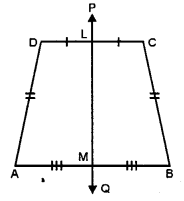

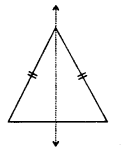



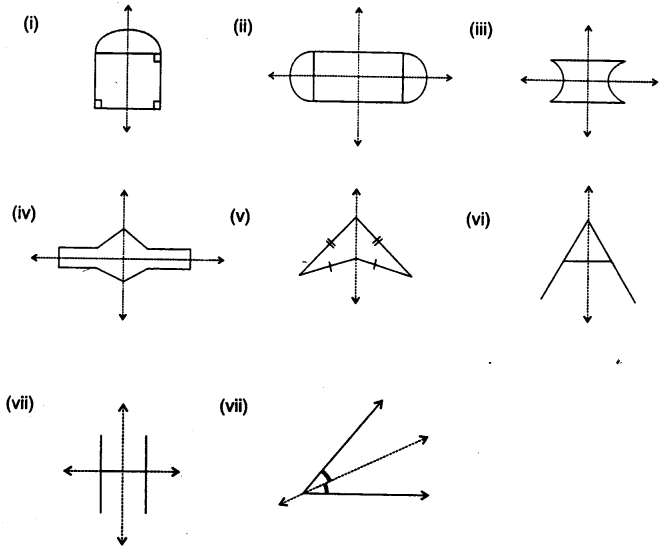

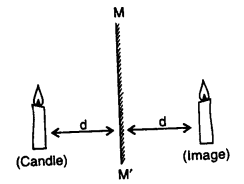
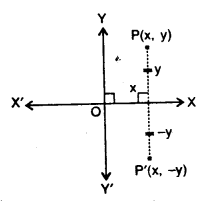
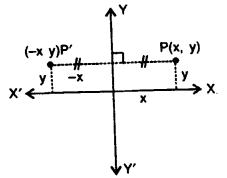
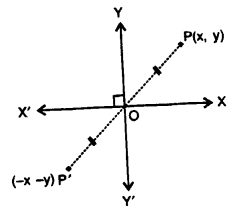
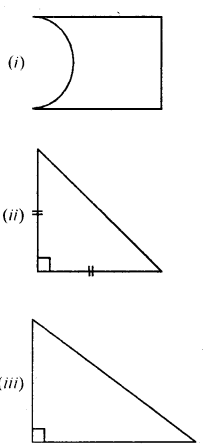
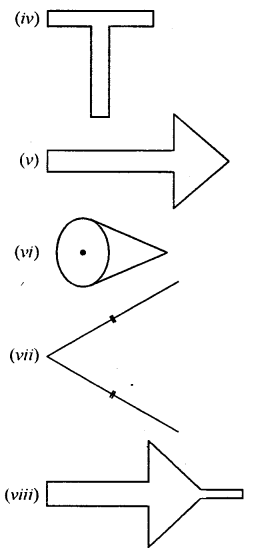
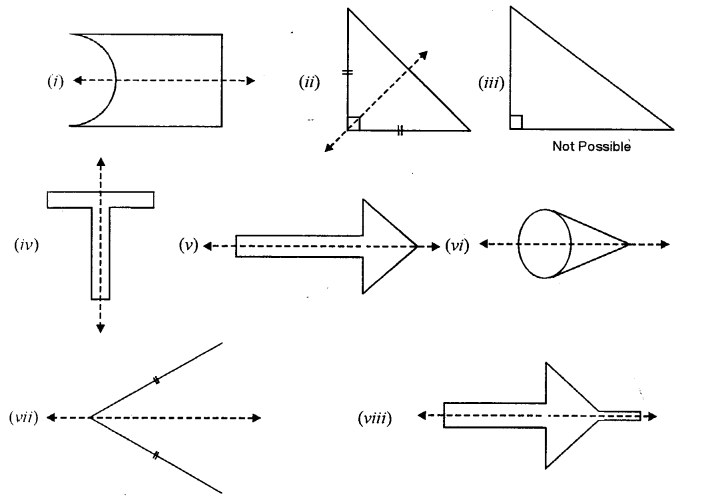
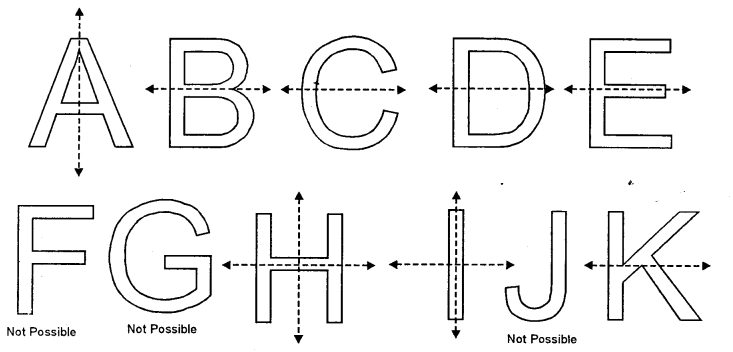
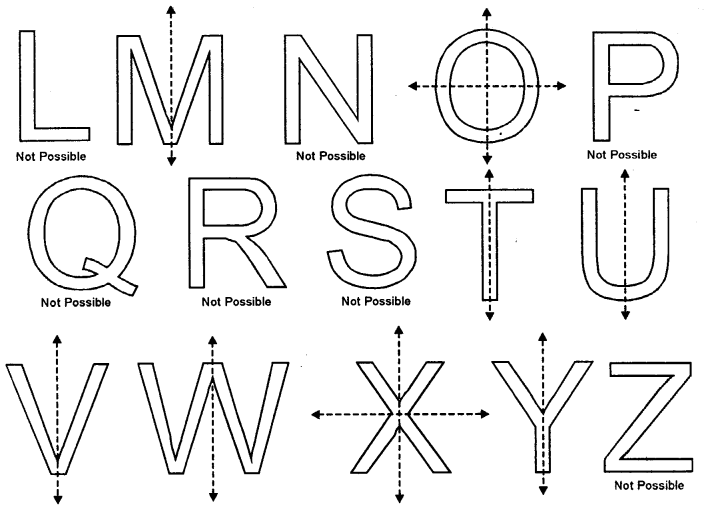
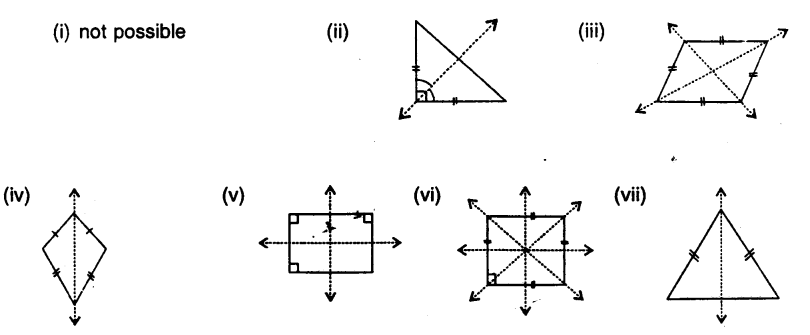 .
.